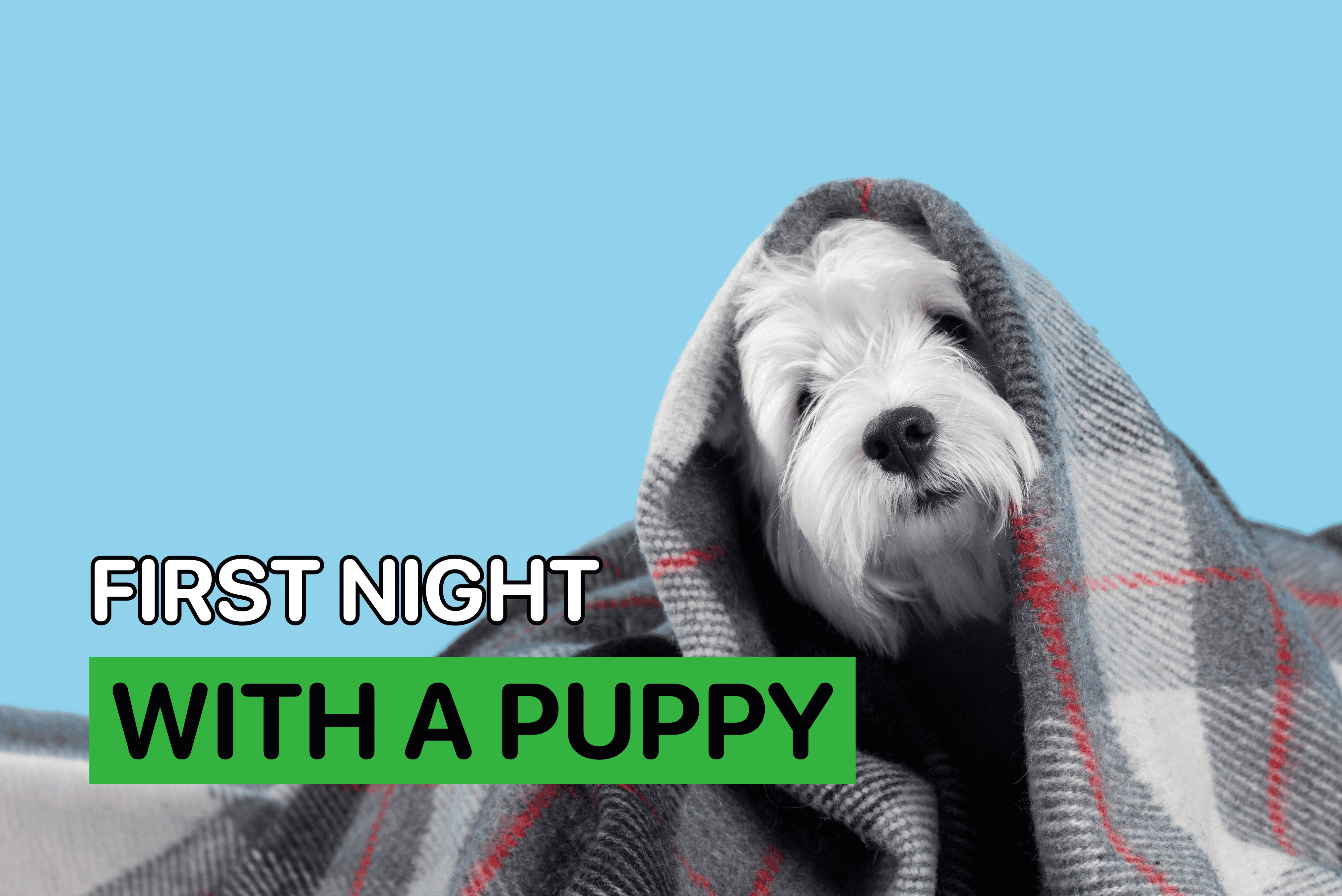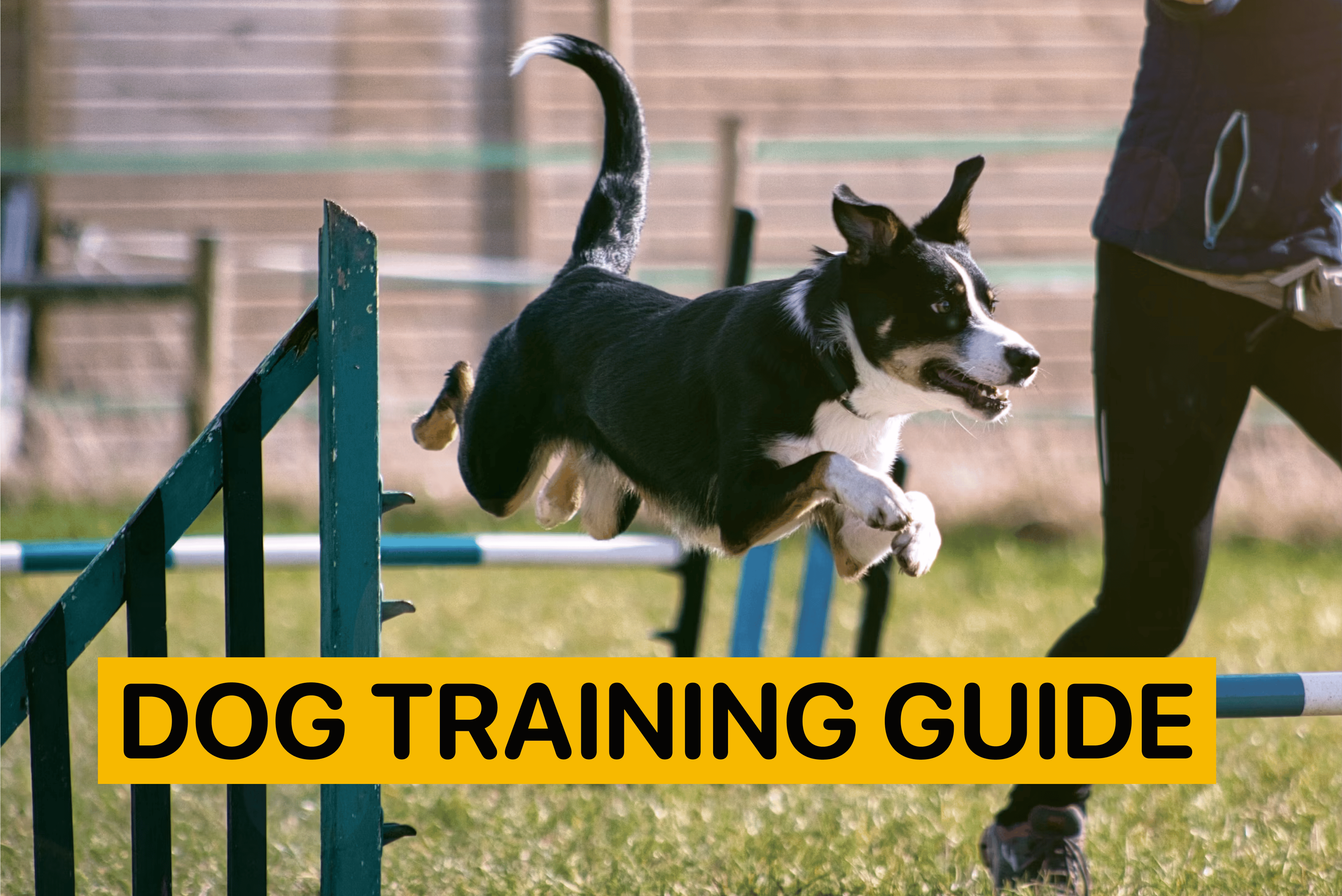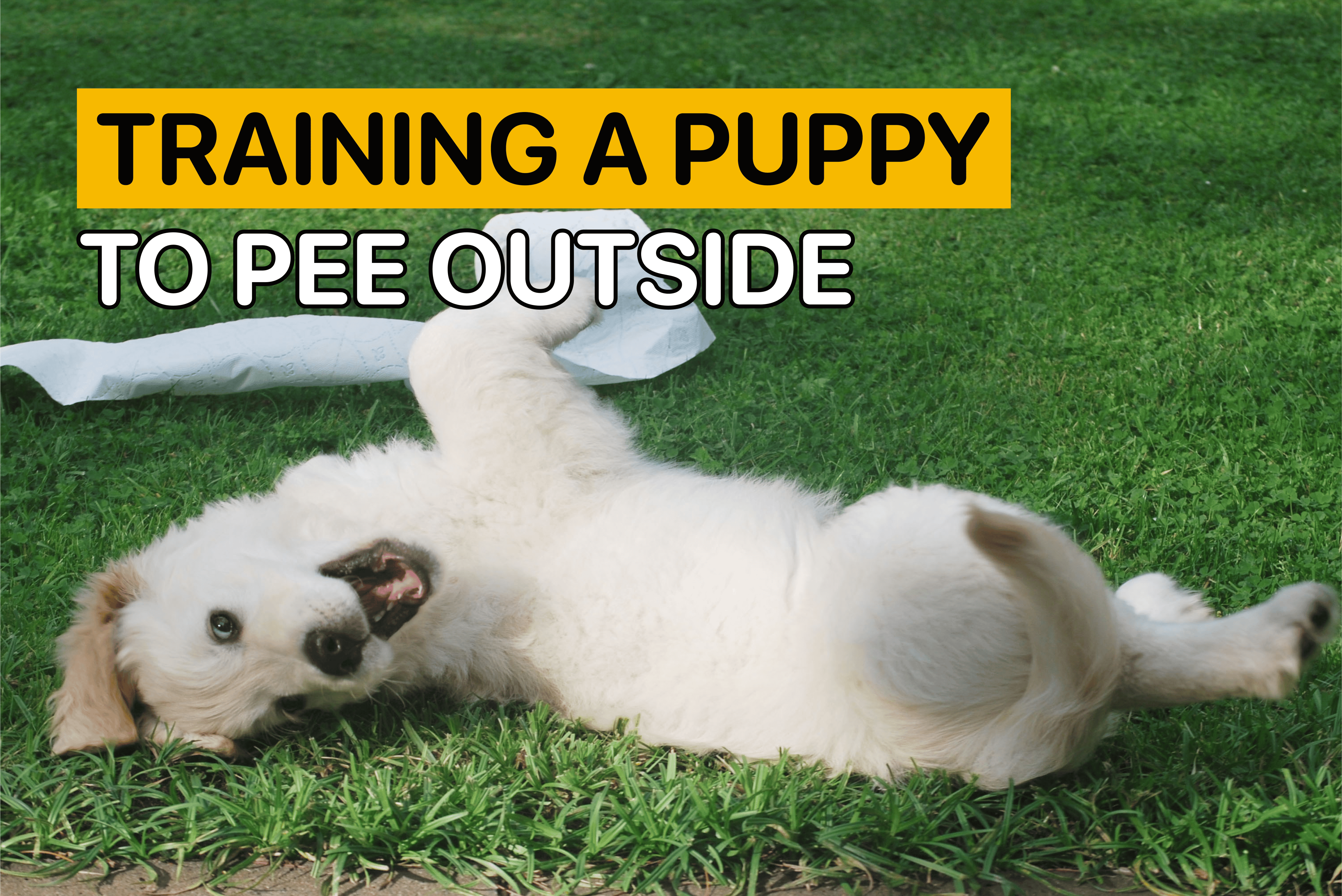Preparing for a Puppy: Checklist of Things to Buy for a New Puppy

By
Woofz Team Updated on |Reviewed by Frederica Caneiro
Bringing home a new puppy is like opening a treasure chest filled with adorable moments and wagging tails. The first day with your furry friend is a whirlwind of excitement, but it can also be a bit overwhelming.
Puppies are bundles of energy and curiosity, and let's face it, they can turn your world upside down. But worry not because, in this article, we’re offering you a comprehensive new puppy checklist to turn the mayhem into pure magic.
What to Bring When Picking Up a Puppy
Collar, ID tag & lead
These items are highly recommended as they can help prevent a puppy from running away or serve as helpful tools to find a lost puppy. Depending on your location, an ID tag may be required by law.
- Puppy’s collar: You can start introducing a pup to a collar as early as 8 weeks of age, allowing them to get used to the feeling.
- ID tag: Your pet’s ID must contain their name, your contact information, and address to help people easily track you down and return a lost puppy. You can even consider microchipping a pup if such an option is available from your veterinarian.

-
Lead: Using a leash serves several purposes, such as training a dog to walk safely near you and controlling their behavior in public places. Introduce it gradually to make the experience comfortable for a small puppy.
-
Cleaning supplies: Stock up on paper towels and other items needed to clean the car in case of accidents during the ride home.
Car harness or crate
If you plan to travel with your dog by car, buying a car harness or crate is vital. These items limit the movement of a dog inside a vehicle. As a result, the driver doesn’t get distracted, and the pup has a reduced risk of injuries if an accident occurs. The choice of how to restrain them depends mainly on the size of your car (a harness is more practical for smaller vehicles), but ensure you purchase only licensed and tested products.
Comfort toy and blanket
Transitioning to a new home can be difficult for a small pup. To help reduce anxiety and stress during the move, consider using a comfort toy or blanket that the dog was familiar with in their first home. Using familiar objects is beneficial for their emotional well-being and can make the adjustment period easier.
Water and travel bowls
Young puppies are known for their energy and eagerness to move around.

That’s why it's crucial to meet their hydration needs, especially when you travel. To avoid using communal water sources, which may not be safe enough, consider buying dog bowls for travelling. Choose lightweight products, preferably made of steel or silicon, which are easier to clean.
Poop Bags
Using poop bags is a must, as it’s a question of hygiene and environmental protection. Collecting your pet’s waste after they toilet outdoors helps prevent parasite invasion and bacterial infections that can spread from the ground.
New Puppy Essentials
Below, you’ll find a new puppy checklist we suggest you use before your new furry friend arrives home.
Two bowls
When you bring a puppy home, get them two separate bowls. Use a large, deep one for water and a smaller one for food. You can also consider using a slow-feeder bowl. It will slow down your dog when they eat and also provide much-needed mental stimulation.
Puppy food and treats
While your dog is growing, food is especially critical for energy. You need to decide what type of puppy food you will use and stock up on it in advance. We suggest consulting your vet to pick the proper diet for your pup’s age and breed.
Harness
Using a harness offers numerous advantages, including improved management of your dog’s behavior during walks and training sessions. Harness helps distribute the weight equally across the chest and back without adding extra pressure to the throat. Such weight distribution can be beneficial for smaller dogs, which are prone to pulling a leash.
Dog crate
Using a crate can help you provide a pup with a safe place to rest.

It’s also a helpful tool for potty training and travelling with your pet. Choose a crate of the right size (it shouldn’t be too big or too small for an adult dog) and ensure it’s made from non-toxic materials, as a pup is likely to chew on things.
Bedding
When it comes to bedding, pet parents can choose from a great variety of materials, styles, and sizes. Consider aspects of a sleeping area like durability and ease of cleaning. Offering a new puppy an extra blanket to make the place more comfy for sleeping is also a great idea.
It's recommended to remove all blankets and bedding if your puppy is chewing them to avoid the risk of ingestion.
Playing and exercising
Puppies thrive on mental and physical stimulation. Having dog toys in your house makes it much easier to keep your new puppy entertained, as they provide a great way to play and interact. Just make sure to pick the right size and choose something your pooch loves!

Offer your pooch balls to play fetch, long toys for tug-of-war (to keep the puppy away from your hands), puzzle toys, and chew toys. Having a variety to choose from allows you to rotate these toys for your puppy, keeping them interested and engaged.
Biting and chewing
Biting and chewing are common destructive behaviors exhibited by puppies.

To provide them with a safe alternative to valuable household possessions, offer them chew toys instead. Rubber bones, puppy teething toys, dental sticks, and puppy-safe bones are all great choices. Consult with your dog's vet for the most appropriate bones and chews.
Grooming
To keep your dog clean, you need to buy grooming essentials for coat and nail care, ear cleaning, and bathing.

These include a dog shampoo (don’t use human products), a brush, a pair of nail clippers, and other grooming tools. Don’t forget to get equipped with a toothbrush and toothpaste to ensure proper dental care for your furry companion.
Potty supplies
Puppies have tiny bladders, and that’s why they need to toilet quite often. Depending on whether you want to teach your dog to go potty outdoors only or indoors, you may need a different set of supplies. Those planning to allow their dog to eliminate inside can consider buying potty pads. We also suggest buying a pet-friendly odor-eliminating spray to clean up thoroughly after the accidents. Finally, have tasty treats at your disposal to reward successful potty breaks.
First aid kit
Arrange a first aid kit for your pup to treat minor injuries and medical conditions. Include the following items: bandages, gauze, tape, blunt-end scissors, and antiseptic wipes. If you plan to clip your dog’s nails at home, add styptic powder to the kit.
Puppy-proofing the house
Once you’ve assembled a new puppy checklist and bought all the necessary items, the next thing you should do is puppy-proof your home. This means:
-
Prevent choking hazards: Keep your home pup-friendly by tucking away things your little buddy might chew on or swallow, such as shoes, delicate decorations, carpets, and pesky wires. Safety first!
-
Allocate a safe room: If any room in your house can't be made safe for your puppy, make sure to keep this room always closed.
-
Avoid slippery floors: If your floors are very slick, it's advisable to avoid playing with your dog there, especially during your pup's early months. It'll help prevent any slips and slides that could be hard on their growing bones.
Make a safe zone for your pet
The safe zone is where your pup can have everything they need to relax, even if you’re not around.

It can be either a crate or a separate room where they have their bed, chew toys, food, and water. If there’s no free room to allocate to your pup, use baby gates or pens to limit where they can roam freely.
What to Do When Bringing a New Puppy Home
Being placed in a new environment can be overwhelming for a pup. They’re suddenly in a new environment, surrounded by unfamiliar sights, smells, and people. To help you and your furry friend feel more prepared, check out this guide with tips for first-time dog owners.
Once you’ve read through those basics, let’s dive into some key things you can do to make your puppy’s first days at home as happy and stress-free as possible.
Introduce family members one at a time
It’s best to start slowly and introduce your family members one by one, allowing your new dog to develop positive associations with each of them. Let the pup initiate the contact and be patient with them during this transition period.
Choose a potty spot
Choose a convenient and quiet potty spot for your pup.

Ideally, opt for a clean and confined space where the dog can feel safe and relaxed. Choose familiar places, such as your yard or a nearby location where your pet has been before.
Minimize stress and excitement
To reduce your pup’s stress levels when adjusting to a new home, develop a consistent routine and follow it daily. Stay consistent with walks, feeds, and potty breaks. When a dog knows what to expect during the day, they get a feeling of safety and control over their daily activities.
Socialize gradually
When you add a furry family member to your life, expect them to feel anxious about all the new experiences that life in a new home brings. To make them feel calmer, take a gradual approach to social activities. Begin with low-intensity social interactions and gradually introduce the pup to more people and places.
Be patient and understanding
A young puppy is like a human child, so be patient with them as they learn new things and skills.

Expect to have occasional setbacks in the training process. Stay calm and patient and never resort to punishment. Remember, a dog is entirely reliant on your support, and they seek positive interactions with you.
House Rules and Training
Be patient, avoid scolding for accidents (punishing for accidents will make your dog think you dislike them peeing, not just where they pee), and use a crate when you can't watch them.
As your puppy gets older, you can extend the time between breaks. With consistency and patience, your puppy will learn, making your time together more enjoyable. If you need more tips and lifehacks on potty training, go to the Woofz app.
House rules
Puppies are super cute, even if they misbehave. However, to prevent your cute, fluffy criminal from growing into a real problem, you need to remember to set some rules for them from the beginning and be consistent about them.

For example, if you want your puppy to learn not to jump on the furniture or not to chew on your shoes, establish that rule from the beginning and be consistent. Use treats and praise to reward good behavior, and remember that patience and repetition are key.
Surviving the first nights with your puppy
If you see that your pup is whining and a little nervous for the first couple of nights, relax, it’s normal!

The best thing you can do is stay calm and confident. Don't scold them, and try not to get nervous. Dogs are very good at reading and adopting their parents' moods. Your care will help calm the dog down faster.
Wrap Up
In those precious early days with your new dog, you'll start an unforgettable journey into puppy parenthood. From puppy checklist to house rules, you've tackled the basics.
Just remember, it's all about patience, consistency, and a lot of love (read this sentence again whenever your pup misbehaves!). These early times are when your puppy is starting to leave pawprints on your heart, so cherish them.



